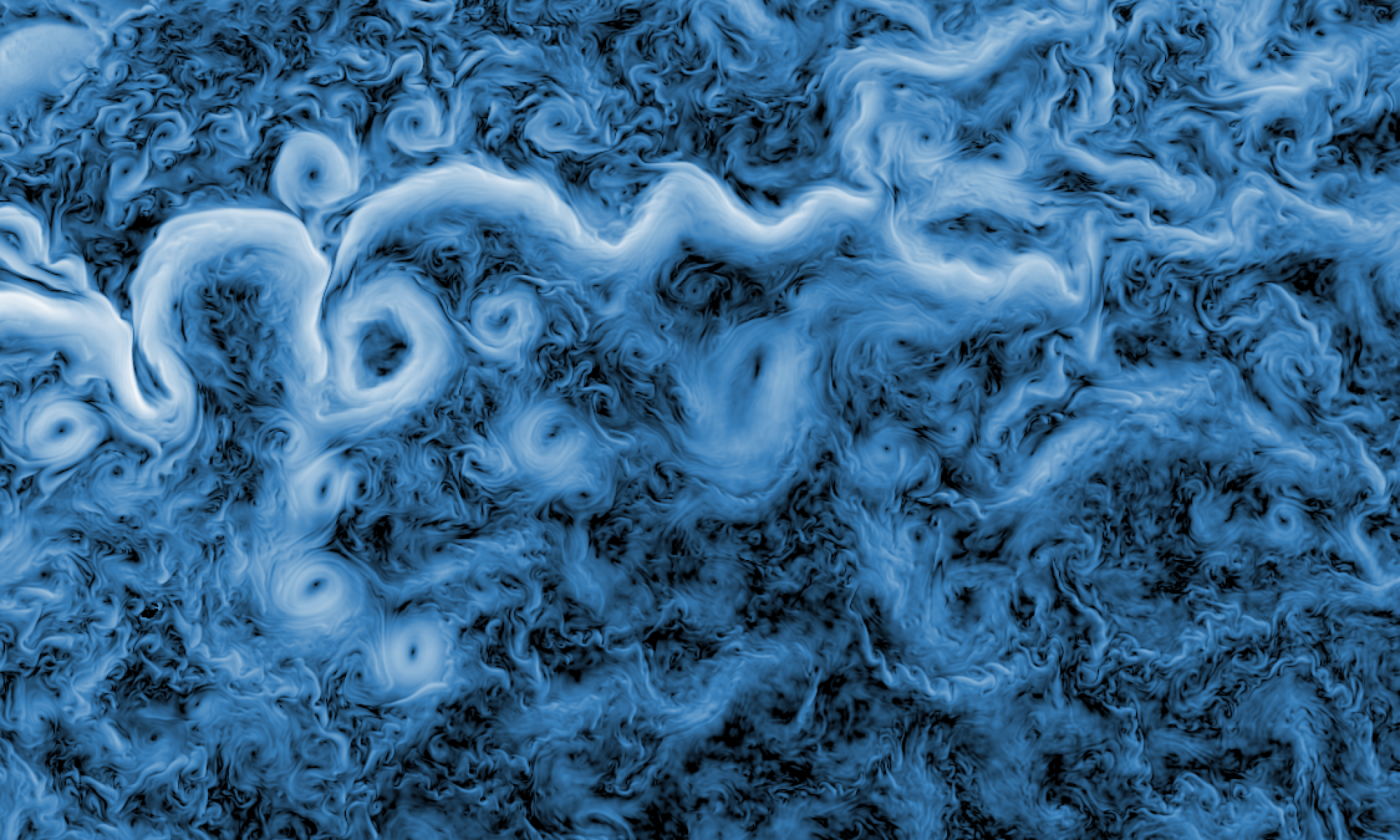As oceanographers, we work to better understand the ocean’s circulation and how it regulates the climate on earth. By probing the ocean with in situ, acoustic, and satellite observations, developing simplified dynamical models, and deploying detailed numerical simulations, we aim to extract the laws that govern this turbulent fluid.
Why study ocean physics?
The ocean absorbs about 30 percent of the carbon humanity is emitting into the atmosphere, and it takes up over 90 percent of the excess heat that increasingly abundant greenhouse gases trap on earth. The rate at which this carbon and heat uptake occurs is thus crucial in regulating how quickly the planet warms. The ocean’s circulation plays a key role in setting the uptake rates, because the currents connect the surface ocean, where carbon and heat are taken up, with the vast reservoir of the interior ocean, where the bulk of the carbon and heat is stored.
As a vast body of turbulent fluid, the ocean has a circulation that displays a complex hierarchy of current systems, ranging in size from planetary-scale overturning to centimeter-scale turbulence. This broad range of scales — and interactions between the scales — is the fundamental challenge to understanding what drives ocean currents, how the circulation might change in the future, and how the ocean may have changed in the past. Oceanographers employ a range of methods to meet this challenge: much of our understanding is encapsulated in simplified theory, but all theory is strongly informed by observations, ranging from satellite-based remote sensing to ship-based in situ sampling, and by numerical models of isolated processes or the ocean as a whole.
The group’s research
We work on a range of topics in ocean dynamics. A major focus has been submesoscale dynamics in the upper ocean. The term designates fronts and currents in the surface ocean that are 1–100 km in size and are thought to effect vigorous and lasting exchange between the surface layer and the interior ocean. Our goal is to understand the physics governing the energization of these scales and how they might affect the larger-scale ocean.
Another focus is the overturning circulation of the deep ocean. The large-scale overturning of the deep ocean regulates climate on centennial, millennial, and longer time scales, and it is thought to play a key role in glacial cycles. Our work addresses how turbulence in boundary layers adjacent to bottom slopes can drive the overturning circulation, and we aim to improve our understanding of the small-scale dynamics in these bottom boundary layers.
You can find more information on our work on the Research and Publications pages.
Get in touch
I currently have a postdoc position to work with the phenomenal new SWOT data. Please feel free to get in touch if you have any questions.
More generally, if you have a strong background in math or physics and are looking for an undergraduate research opportunity, or if you are interested in joining the group as a graduate student or postdoc, please get in touch. No prior knowledge of ocean dynamics is required.
Students interested in joining the group should apply to the Environmental Science and Engineering graduate program. Send me an email to discuss potential thesis projects.
The Division of Geological and Planetary Sciences awards a number of postdoctoral fellowships every year (only listed when currently solicited). If you are interested in applying for these or other fellowships, please get in touch.
